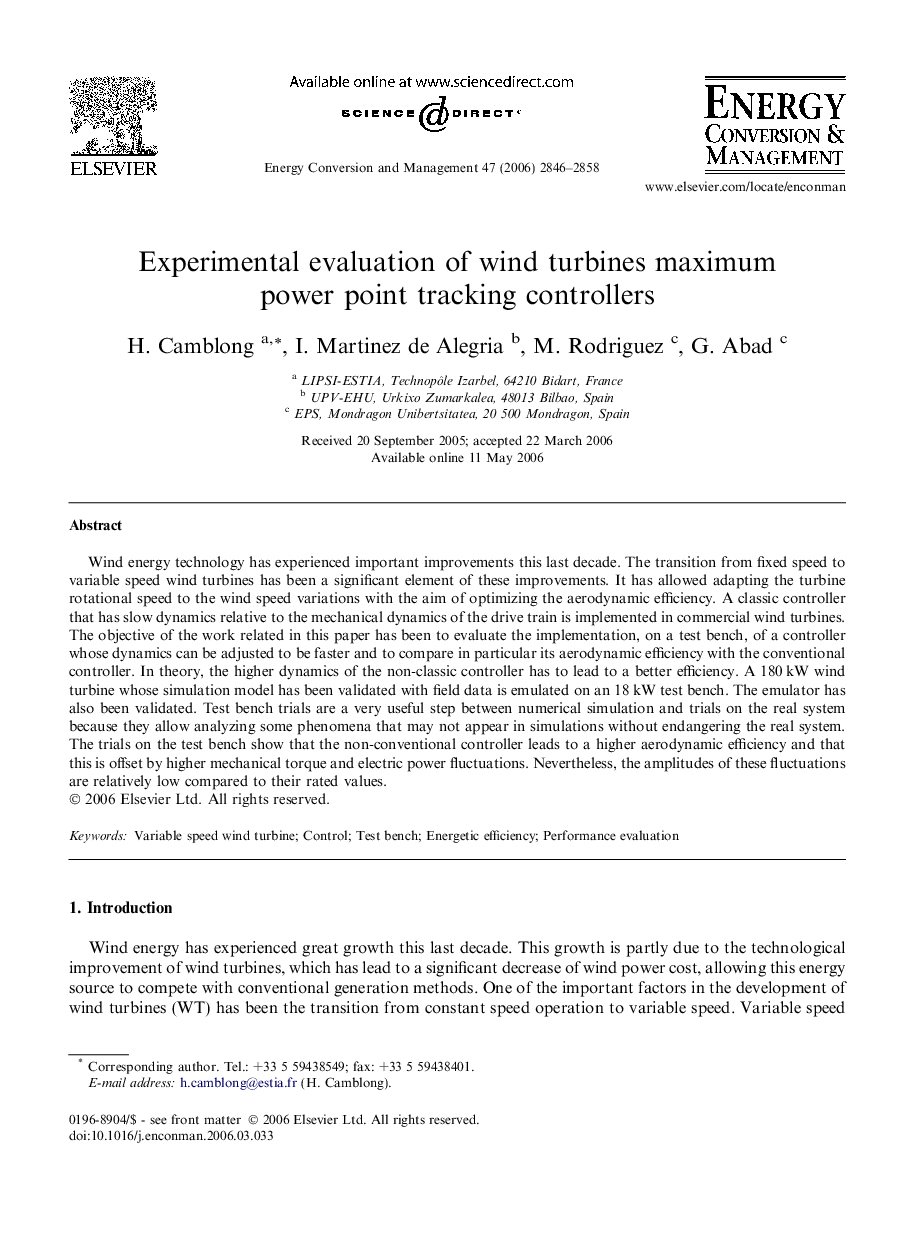| Article ID | Journal | Published Year | Pages | File Type |
|---|---|---|---|---|
| 762231 | Energy Conversion and Management | 2006 | 13 Pages |
Wind energy technology has experienced important improvements this last decade. The transition from fixed speed to variable speed wind turbines has been a significant element of these improvements. It has allowed adapting the turbine rotational speed to the wind speed variations with the aim of optimizing the aerodynamic efficiency. A classic controller that has slow dynamics relative to the mechanical dynamics of the drive train is implemented in commercial wind turbines. The objective of the work related in this paper has been to evaluate the implementation, on a test bench, of a controller whose dynamics can be adjusted to be faster and to compare in particular its aerodynamic efficiency with the conventional controller. In theory, the higher dynamics of the non-classic controller has to lead to a better efficiency. A 180 kW wind turbine whose simulation model has been validated with field data is emulated on an 18 kW test bench. The emulator has also been validated. Test bench trials are a very useful step between numerical simulation and trials on the real system because they allow analyzing some phenomena that may not appear in simulations without endangering the real system. The trials on the test bench show that the non-conventional controller leads to a higher aerodynamic efficiency and that this is offset by higher mechanical torque and electric power fluctuations. Nevertheless, the amplitudes of these fluctuations are relatively low compared to their rated values.
